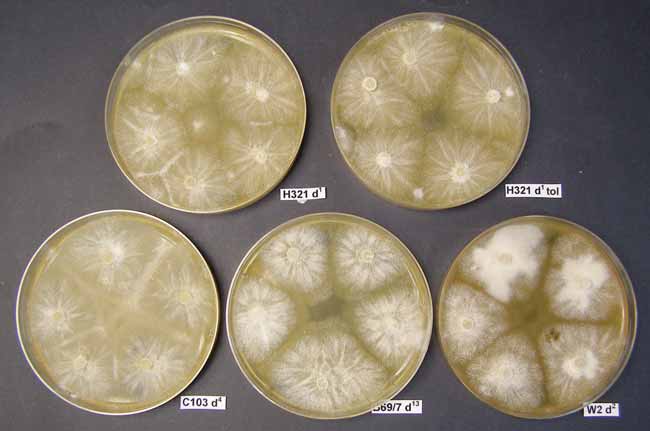PESTS AND DISEASES OF FORESTRY IN NEW ZEALAND
Science fights Dutch Elm Disease
From Biosecurity 99, August 2010.
Researchers worldwide are looking at innovative methods for alternative and sustainable control of urban tree diseases. In New Zealand, Dutch elm disease is being used as a test system.

Dutch elm disease has destroyed more than 100 million elms worldwide in the past century, indelibly altering the rural and urban landscape in many parts of Europe and North America. Caused by the pathogen Ophiostoma novo-ulmi, the disease is now present in the greater Auckland area and could wipe out more than 90 percent of elms in New Zealand if control efforts are not successful.
The disease was first discovered in New Zealand in December 1989 in an Auckland inner-city park, and an eradication campaign was begun immediately by MAF.
Initially, the eradication campaign looked promising. However, following consultation with local authorities about 20 of the worst pests established in New Zealand to decide which could and should be eradicated or contained to localised areas, responsibility for the disease was handed over to local authorities. The control programme is focused on identifying and removing infected elm material, and on restricting the movement of elm produce in Auckland to prevent the disease from spreading.
Crown research institute Scion is also working on a project to reduce the number of dead elms and slow disease spread to other parts of New Zealand through the development of a virus-based biological control system. Specifically, the plan is to introduce a virus (d-factor virus specific to Ophiostoma novo-ulmi) into New Zealand’s pathogen population to reduce the pathogen’s virulence.
New Zealand is uniquely situated to use this form of biological control because it has a small population of the Dutch elm disease pathogen with low genetic diversity. It is expected that a genetically uniform pathogen population will be more susceptible to viral biological control agents than a genetically diverse population.

The first phase of the project demonstrated that the pathogen population was genetically uniform and free of viruses. Now, New Zealand isolates infected with specific viruses will be imported into quarantine facilities at Scion. This second phase of the project involves testing the growth rate, viability and survival of virus-infected O. novo-ulmi isolates, and undertaking studies to investigate the transmission, retention and competition of the viruses in infected O. novo-ulmi isolates. Data obtained from these experiments will be used to select the most effective viruses for biological control of this pathogen and are a necessary component for any subsequent Environmental Risk Management Authority (ERMA) field release approval applications.
A team of national and international experts on Dutch elm disease and forest pathology from Scion and Forest Research, United Kingdom, is undertaking the research.
Success with this research project will change the way in which newly established pathogens of trees are treated, and provide alternative and sustainable methods to deal with diseases that threaten our urban landscapes. It also has the potential to protect commercial and indigenous tree species.
Dr Rebecca Ganley, Plant Pathologist, Scion, rebecca.ganley@scionresearch.com

 Farm Forestry New Zealand
Farm Forestry New Zealand

